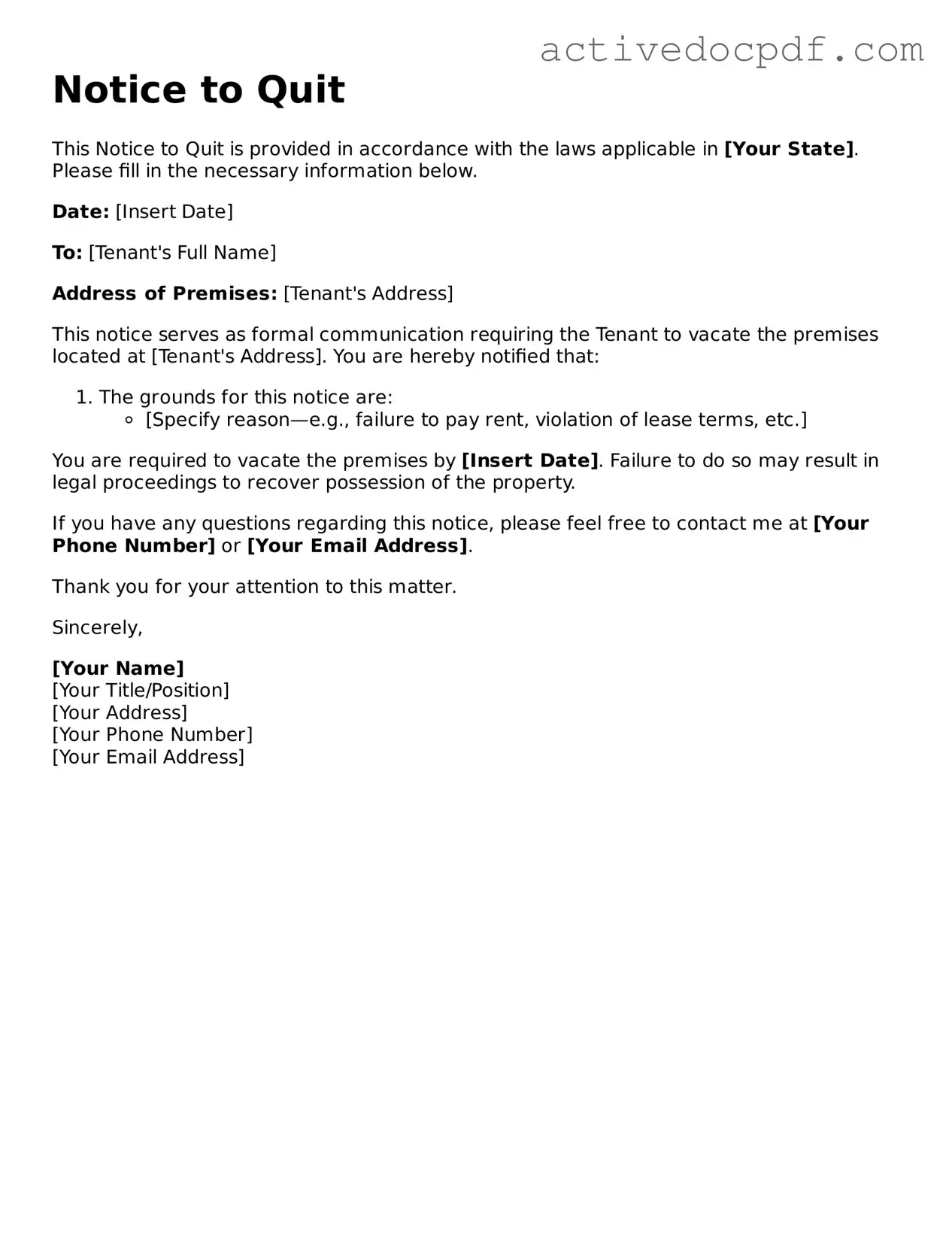A Notice to Quit form is a legal document used by landlords to inform tenants that they must vacate the rental property. This notice typically outlines the reasons for the eviction, such as non-payment of rent or violation of lease terms. It serves as a formal request for the tenant to leave the premises within a specified timeframe.
When should a landlord use a Notice to Quit?
Landlords should use a Notice to Quit when they intend to terminate a lease agreement. Common situations include:
-
Non-payment of rent
-
Lease violations, such as unauthorized pets or excessive noise
-
End of lease term without renewal
It is important for landlords to follow the specific legal requirements for issuing this notice, which can vary by state.
How long does a tenant have to respond to a Notice to Quit?
The timeframe for a tenant to respond to a Notice to Quit depends on the laws of the state where the property is located. Generally, tenants may have anywhere from a few days to a month to vacate the property. Always check local regulations for specific timelines.
A well-drafted Notice to Quit should include the following information:
-
The landlord's name and contact information
-
The tenant's name and rental property address
-
The reason for the eviction
-
The date by which the tenant must vacate
-
Any applicable state laws or lease provisions
Including this information helps ensure clarity and legality in the eviction process.
Can a tenant contest a Notice to Quit?
Yes, tenants can contest a Notice to Quit. If they believe the notice is unjustified, they can respond in writing, negotiate with the landlord, or seek legal counsel. If the matter escalates, it may lead to court proceedings where both parties can present their cases.
What happens if a tenant does not comply with a Notice to Quit?
If a tenant fails to vacate the property by the specified date in the Notice to Quit, the landlord may initiate eviction proceedings. This often involves filing a lawsuit in court to obtain a formal eviction order. The legal process can vary based on local laws and regulations.
Is a Notice to Quit the same as an eviction notice?
While a Notice to Quit is often the first step in the eviction process, it is not the same as an eviction notice. The Notice to Quit requests that the tenant leave the property, whereas an eviction notice is issued after the tenant fails to comply with the Notice to Quit and legal action is taken.
Do I need to provide a reason for the Notice to Quit?
Yes, providing a reason for the Notice to Quit is typically required. This reason should be clear and specific, as it helps to establish the grounds for eviction. Common reasons include failure to pay rent or breach of lease terms.
Can a Notice to Quit be delivered in any way?
Delivery methods for a Notice to Quit can vary by state. Generally, it can be delivered in person, sent via certified mail, or posted on the rental property. It is crucial to follow the legal requirements for delivery to ensure the notice is valid.
What should a tenant do upon receiving a Notice to Quit?
Upon receiving a Notice to Quit, a tenant should carefully review the document. They should assess the reasons stated and determine if they can comply with the request. If the tenant believes the notice is unjust, they may want to seek legal advice and consider their options for contesting the eviction.
